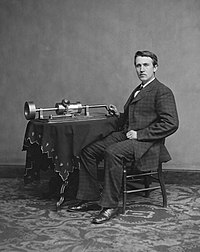
Photo from wikipedia
The relationship between technological innovation (TL) and environmental pollution (EP) and its action mechanisms are complex and controversial aspects of discussion. Using the spatial autocorrelation analysis, standard deviation ellipse analysis,… Click to show full abstract
The relationship between technological innovation (TL) and environmental pollution (EP) and its action mechanisms are complex and controversial aspects of discussion. Using the spatial autocorrelation analysis, standard deviation ellipse analysis, kernel density function, spatial econometric model, this study analyzed the spatial distribution, evolution characteristics, and influencing factors of the EP and TL from 2000 to 2020 in China. Results found there was a significant spatial autocorrelation between the EP and TL in 2000–2020. The standard deviation ellipse of EP was broadly distributed in the “southwest-northeast” direction, indicating that EP presented a trend of concentration in the direction of “southwest-northeast.” The moving trajectory of the center of gravity for the EP in 2000–2020 was essentially moved from the northeast to southwest. Overall, the national level of TL exhibited a “north-south change, high in the east, and low in the west” trend. Regional differences were gradually expanding, and the polarization was evident. Regardless of using least squares method (OLS) or quantile regression (QR) models, TL, human capital (HC), and industrial structure (IS) all had an inhibitory effect on the EP at the effective significance level. Total population (TP), foreign direct investment (FDI), and local fiscal expenditure (LFE) were positively related to the EP.
Journal Title: Frontiers in Public Health
Year Published: 2022
Link to full text (if available)
Share on Social Media: Sign Up to like & get
recommendations!